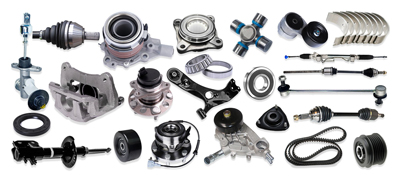With over 15 years of experience in the automotive industry, I have witnessed firsthand the critical role that cylinder head gaskets play in ensuring the optimal performance of engines. In this comprehensive article, I will delve into the intricate details of cylinder head gaskets, highlighting their advantages, features, and professional-grade knowledge. I will also share valuable tips and suggestions based on my extensive experience.
What is a Cylinder Head Gasket?
A cylinder head gasket is an essential component that seals the joint between the engine block and the cylinder head. It prevents the escape of combustion gases, coolant, and oil while ensuring a leak-proof connection. Without a properly functioning cylinder head gasket, the engine’s operation can be severely compromised.
Advantages and Benefits of Cylinder Head Gaskets
Cylinder head gaskets offer a multitude of advantages, including:
Enhanced Engine Performance:
By effectively sealing the combustion chamber, cylinder head gaskets optimize compression and prevent leaks, resulting in improved engine efficiency and power output.
Increased Durability:
High-quality cylinder head gaskets are engineered to withstand extreme temperatures and pressures, ensuring longevity and reliability in demanding operating conditions.
Improved Fuel Economy:
Properly sealed cylinder head gaskets minimize combustion chamber leakage, preventing the loss of unburned fuel and maximizing fuel efficiency.
Reduced Emissions:
By preventing the escape of combustion gases, cylinder head gaskets contribute to environmental protection by reducing air and noise pollution.
Types of Cylinder Head Gaskets
There are several types of cylinder head gaskets available, each suited to specific applications:
Composite Gaskets:
Made of a combination of materials such as metal, rubber, and graphite, composite gaskets offer high durability and sealing properties.
Metal Gaskets:
Constructed entirely of metal, these gaskets can withstand extreme temperatures and pressures, making them ideal for high-performance engines.
MLS (Multi-Layer Steel) Gaskets:
MLS gaskets feature multiple layers of thin stainless steel, providing excellent sealing and conformability to irregular surfaces.
Cylinder Head Gaskets Installation and Maintenance
Proper installation and maintenance of cylinder head gaskets are crucial for their longevity. Here are some key considerations:
Surface Preparation:
Before installing a new cylinder head gasket, it is essential to thoroughly clean and prepare the mating surfaces to ensure a leak-proof seal.
Tightening Sequence:
Following the manufacturer’s recommended tightening sequence and torque specifications is critical for achieving optimal sealing.
Coolant and Lubrication:
Use the correct coolant and oil specified by the vehicle manufacturer to maintain the integrity of the cylinder head gasket.
Troubleshooting and Diagnosis
In the event of a suspected cylinder head gasket failure, various diagnostic techniques can be employed:
Compression Test:
Measuring the engine’s compression can reveal a loss of compression due to a leaking cylinder head gasket.
Leak Down Test:
Injecting compressed air into the cylinder allows for the detection of leakages in the cylinder head gasket.
Visual Inspection:
Removing the cylinder head may reveal physical damage or deterioration of the gasket, indicating a failure.
Tips and Suggestions for Professionals
Use OEM Cylinder Head Gaskets :
Original equipment manufacturer (OEM) gaskets are designed specifically for the application and provide the best fit and performance.
Employ Proper Torque Specifications:
Failure to follow the specified torque values can lead to gasket failure or compromising the engine’s integrity.
Check for Head Warpage:
Use a straightedge to determine if the cylinder head or engine block is warped, which can contribute to gasket failure.
Conclusion
Cylinder head gaskets are vital components that ensure the smooth and efficient operation of engines. By understanding their advantages, features, and professional-grade knowledge, automotive professionals can effectively troubleshoot, diagnose, and maintain these critical parts. Embracing the tips and suggestions provided in this article will empower them to achieve optimal engine performance and reliability.
ROKEY AUTO SPARE PARTS CO., LTD. is your trusted partner for high-quality aftermarket auto parts. From engine and transmission components to suspension and electrical parts, we deliver excellence in value, quality, and service. With our commitment to fast delivery and competitive prices, we strive to exceed your expectations every time. Choose ROKEY Auto Parts for reliability and value you can trust!
Common Questions and Answers
What are the signs of a failed cylinder head gasket?
Common signs include overheating, white smoke from the exhaust, coolant leaks, and oil contamination.
How often should cylinder head gaskets be replaced?
The frequency of replacement varies depending on the make and model of the vehicle. Refer to the manufacturer’s maintenance schedule for guidance.
Can a failed cylinder head gasket cause engine damage?
Yes, a prolonged failure can lead to catastrophic engine damage, including blown head gaskets, cracked cylinder heads, and seized pistons.

 Twitter
Twitter
 Facebook
Facebook
 Linkedin
Linkedin
 Google +
Google +



